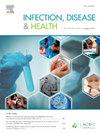A comprehensive review of current status of infection prevention and control program in low- and middle-income countries
IF 2
Q2 PUBLIC, ENVIRONMENTAL & OCCUPATIONAL HEALTH
引用次数: 0
Abstract
Objective
This systematic review aims to underscore the adoption and implementation of infection prevention and control (IPC) practices based on the World Health Organization's Infection Prevention and Control Assessment Framework (IPCAF) in low- and middle-income countries (LMICs).
Methods and design
Systematic review.
Guiding methodology
Cochrane Handbook for systematic reviews and the Preferred Reporting Items for Systematic Reviews and Meta-Analyses (PRISMA) guidelines.
Data sources
PubMed, Google Scholar, Web of Science, Scopus, Cochrane, grey literature and reference lists of studies published between January 2018 and September 2024.
Eligibility criteria to recruit studies
Peer reviewed full length, cross-sectional, mixed method and quasi-experimental studies written in English, conducted in LMICs and used IPCAF as assessment tool.
Data extraction and synthesis
Data were extracted on a data extraction form and quality of studies was evaluated by using the Standard Quality Assessment Criteria for Evaluating Primary Research Papers from a Variety of Fields. Evidence was generated as a group of themes.
Findings
In total, 24 studies were selected based on eligibility criteria. IPC program was implemented to a varying degree in healthcare facilities (HCFs) of LMICs. Key barriers reported were; no allocation of budget for IPC, insufficient staffing of full-time IPC professionals, absence of clear IPC goals, challenges in staff training, lack of resources, no periodic monitoring and inconsistent availability of IPC supplies.
Conclusions
There was an evidence on implementation of IPC program in the HCFs of LMICs, however, LMICs faced substantial challenges in achieving consistent and effective IPC.
对低收入和中等收入国家感染预防和控制规划现状的全面审查。
目的:本系统综述旨在强调在低收入和中等收入国家采用和实施基于世界卫生组织感染预防和控制评估框架(IPCAF)的感染预防和控制(IPC)做法。方法与设计:系统评价。指导方法:Cochrane系统评价手册和首选报告项目的系统评价和荟萃分析(PRISMA)指南。数据来源:PubMed,谷歌Scholar, Web of Science, Scopus, Cochrane, 2018年1月至2024年9月间发表的灰色文献和参考文献列表。纳入研究的资格标准:同行评议的完整长度、横断面、混合方法和准实验研究,用英文撰写,在低收入国家进行,并使用IPCAF作为评估工具。数据提取和综合:从数据提取表中提取数据,并使用评估不同领域主要研究论文的标准质量评估标准对研究质量进行评估。证据是作为一组主题生成的。结果:根据入选标准共入选24项研究。IPC计划在低收入和中等收入国家的医疗机构(hcf)中得到了不同程度的实施。报告的主要障碍有:没有为IPC分配预算,全职IPC专业人员配备不足,缺乏明确的IPC目标,工作人员培训面临挑战,缺乏资源,没有定期监测,IPC供应不稳定。结论:有证据表明在中低收入国家的hcf中实施了IPC计划,然而,中低收入国家在实现一致和有效的IPC方面面临着重大挑战。
本文章由计算机程序翻译,如有差异,请以英文原文为准。
求助全文
约1分钟内获得全文
求助全文
来源期刊

Infection Disease & Health
PUBLIC, ENVIRONMENTAL & OCCUPATIONAL HEALTH-
CiteScore
5.70
自引率
5.70%
发文量
40
审稿时长
20 days
期刊介绍:
The journal aims to be a platform for the publication and dissemination of knowledge in the area of infection and disease causing infection in humans. The journal is quarterly and publishes research, reviews, concise communications, commentary and other articles concerned with infection and disease affecting the health of an individual, organisation or population. The original and important articles in the journal investigate, report or discuss infection prevention and control; clinical, social, epidemiological or public health aspects of infectious disease; policy and planning for the control of infections; zoonoses; and vaccination related to disease in human health. Infection, Disease & Health provides a platform for the publication and dissemination of original knowledge at the nexus of the areas infection, Disease and health in a One Health context. One Health recognizes that the health of people is connected to the health of animals and the environment. One Health encourages and advances the collaborative efforts of multiple disciplines-working locally, nationally, and globally-to achieve the best health for people, animals, and our environment. This approach is fundamental because 6 out of every 10 infectious diseases in humans are zoonotic, or spread from animals. We would be expected to report or discuss infection prevention and control; clinical, social, epidemiological or public health aspects of infectious disease; policy and planning for the control of infections; zoonosis; and vaccination related to disease in human health. The Journal seeks to bring together knowledge from all specialties involved in infection research and clinical practice, and present the best work in this ever-changing field. The audience of the journal includes researchers, clinicians, health workers and public policy professionals concerned with infection, disease and health.
 求助内容:
求助内容: 应助结果提醒方式:
应助结果提醒方式:


